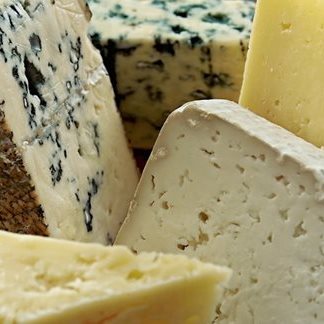Tasmania has set itself the ambitious goal of growing its agricultural sector tenfold to $10 billion each year by 2050. A key contributor to this will be the state’s dairy industry, and one of its largest players – food and beverage manufacturer, Lion.
The company recently launched The Heritage in Tasmania’s Burnie – the southern hemisphere’s largest and one of the world’s most technologically advanced specialty cheese facilities, with investment focused on improving the site’s capacity, capability, environmental impact and safety.
Lion closed eight of its factories across the mainland to focus on the $150 million upgrade, which will see The Heritage process up to 110 million litres of milk a year into parmesan, brie and camembert for popular cheese brands like South Cape and Tasmanian Heritage.
Given the size and production capacity of the Burnie site, its main focus at the moment is the retail sector.
“We’re not a small factory anymore. So I think just to get the volumes through, we seem to concentrate a little bit more on retail,”Ueli Berger, head cheesemaker, told Hospitality.
“It’s just because of the equipment we have here. We’re sort of geared up for big production. The smaller, boutique cheeses fit in a lot better with the handmade, small scale of King Island, that’s just the way it works out.”
King Island, while also having a retail arm, targets the foodservice industry with its Black Label range which includes cheddar, blue and brie varieties. Heidi branded products, also owned by Lion and produced at the Burnie site, are only available to restaurants, cafes and other hospitality businesses.
“They are 100 percent foodservice, and we’re very, very proud of them. In my eyes they’re the leading cheeses in Australia, especially for the semi-hard class. So we’re still very strong in [foodservice]; it’s not that we’re not involved, it’s just that the focus is not as big as it could be. We’re still very proud and we’re still holding our market share, but I feel like we should grow it,” Berger says.
“Because I think that, especially for cheesemakers, that’s where you can really show your best cheeses.”
{^youtubevideo|(width)480|(height)295|(rel)True|(autoplay)False|(fs)True|(url)http://www.youtube.com/watch?v=eLuIPa-6JrQ|(loop)False^}
The big cheese
It’s crucial for Lion to grow its presence in the foodservice sector, Berger says, because that’s how consumers come to realise that Australian cheeses are amongst the best in the world.
“Our milk is just world class. Earlier this year I was able to judge in America at a big specialty cheese show and their cheeses are so different, just because of the milk – because they have to house the cows, they have to supplement the feed during winter. I just said to myself, ‘how lucky we are over here. Our cows are out in the green grass all year long.’ And that just makes a massive difference.”
Berger says Australian diners are becoming more and more patriotic when it comes to seeking out foods that are grown and produced locally, but there’s still work to be done when it comes to cheeses.
“For a lot of things people are now shopping Australian, but with cheeses for some reason they still reckon Europe is better, but when you look at the quality of the milk and everything, it’s not. We’re making some really, really good cheeses.
“A lot of cheese that comes in from Europe, [consumers] might buy it once or twice but generally they’re a little bit too old and over the hill. They’re quite strong and I don’t think a lot of people actually like that. So I think it’s more about getting nice, balanced food flavours, then people will keep picking it up,” he says.
Trends to watch for
Berger said Australian consumers – and even those in Europe – prefer more approachable, subtle flavours when eating cheese and that’s what Lion focuses on with its product development. Having said that, he’s hoping that washed rind, quite a polarising cheese thanks to its pungent aroma, will enjoy a push in the foodservice industry in 2016.
“I reckon there’s still an opportunity for the washed rind class, and I also think that at the moment the blue class is a bit stagnant, so I think we can look into that and get out what the customers want from blue cheeses: not necessarily strong flavours or big flavours, but more unique and easy to eat flavours.
“And of course soft cheeses are still very popular. But by the same token, I think the next big thing could be semi-hard cheese. I believe we’re still making some very good semi-hard cheese, but there’s a big gap here in the market. I’d love to do more like the raclette and the tilsit from the Heidi side. There are a whole group of other cheeses, not just the washed rind ones but more the tomme style and things like that. We’ve hardly got them over here and I think that could be the next opportunity.
“I really hope so. I’ve flagged it for a fair few years now, so hopefully it’ll happen before long.”
Danielle Bowling visited The Heritage as a guest of Brand Tasmania.


